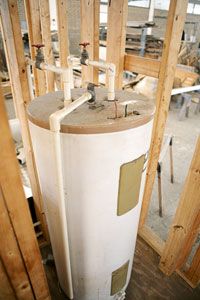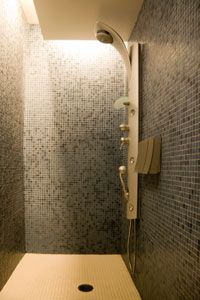If you have an older model furnace or water heater that uses natural gas, or if you have a set of gas logs in your fire place, you have probably seen the small blue flame known as the pilot light. You may even have been able to experience the thrill of relighting the pilot light when it goes out. Let's take a look at how the pilot light works.
The basic idea behind a pilot light is simple. Its purpose is to provide the flame needed to light the gas coming out of the main burner. When the furnace "turns on", a valve releases gas into the burner and the pilot light ignites that gas.
Advertisement
The way that a pilot light is created is also simple. It is made by allowing a small amount of gas to come from the gas pipe through a small tube. You light the gas escaping from the tube, and it burns all the time.
You can see, however, that the pilot light creates a potential safety problem. If the pilot light flame were to ever blow out, the gas would keep coming out of the pilot light tube. If this gas were to collect inside your house and then ignite, it would create an explosion. To solve this problem, the pilot light tube has a valve that cuts the gas to the pilot light in the event that it ever blows out.
This valve is actually a fascinating little piece of equipment. It has to be able to sense whether that pilot light is lit or not, and for safety reasons it needs to be able to do that without requiring any outside electricity. How can you create a pilot light sensor that works reliably over the course of many years without any electricity?
The answer to that question is ingenious. The way to do it is to use the heat of the pilot light flame to generate the electricity by using a thermocouple.
Thermocouples generate electricity directly from heat. They take advantage of an electrical effect that occurs at junctions between different metals. For example, take two iron wires and one copper wire. Twist one end of the copper wire and one end of one of the iron wires together. Do the same with the other end of the copper wire and the other iron wire. If you heat one of the twisted junctions with a flame and attach the two free iron wires to a volt meter, you will be able to measure a voltage.
In a pilot light, one of the junctions of a thermocouple is sitting in the pilot light's flame. The electricity that is created runs to a small electromagnetic valve and holds it open. If the pilot light blows out, the thermocouple quickly cools off. It stops generating electricity and the valve closes.
To relight the pilot light, you have to push a button that opens the value manually. Then you light the pilot light and wait for the thermocouple to heat up (about 30 seconds). Once it is hot, the thermocouple is generating the electricity needed to hold the value open. Then you can let go of the button.
The problem with pilot lights is that they waste a lot of gas. Therefore, most modern appliances do not have a pilot light. Instead, they use a piezoelectric spark to light the burner.
Advertisement



